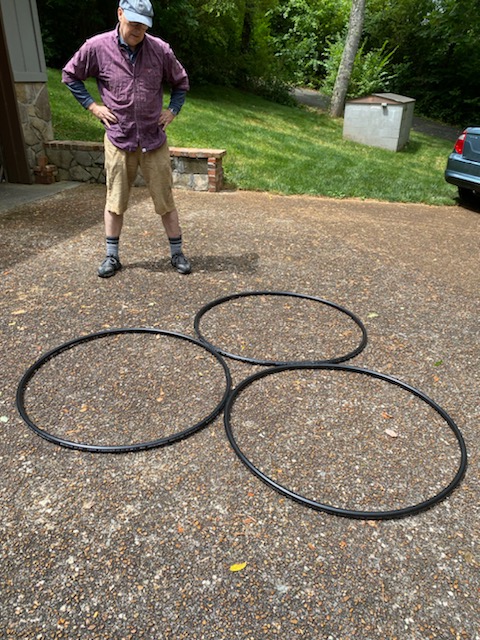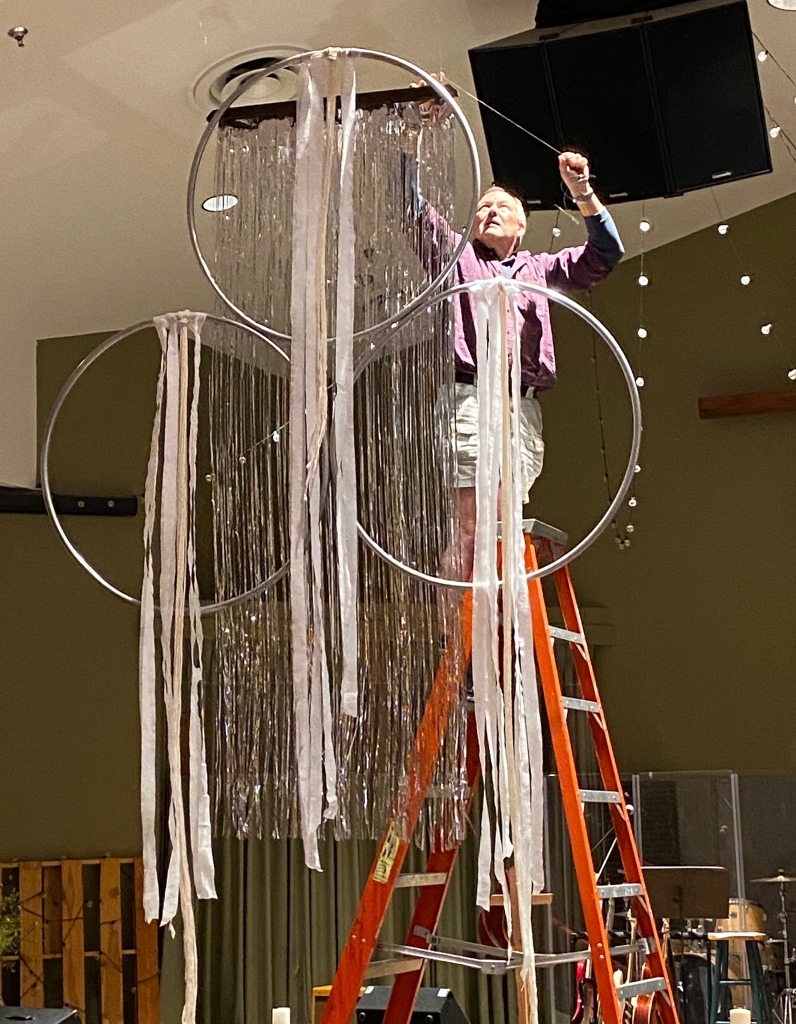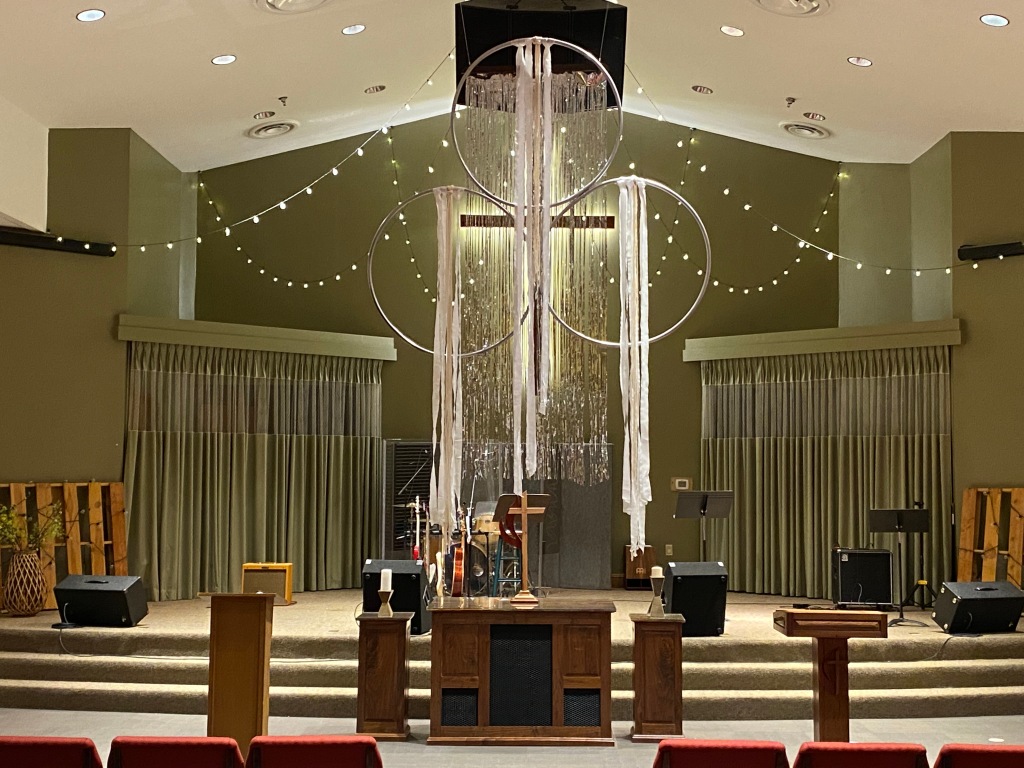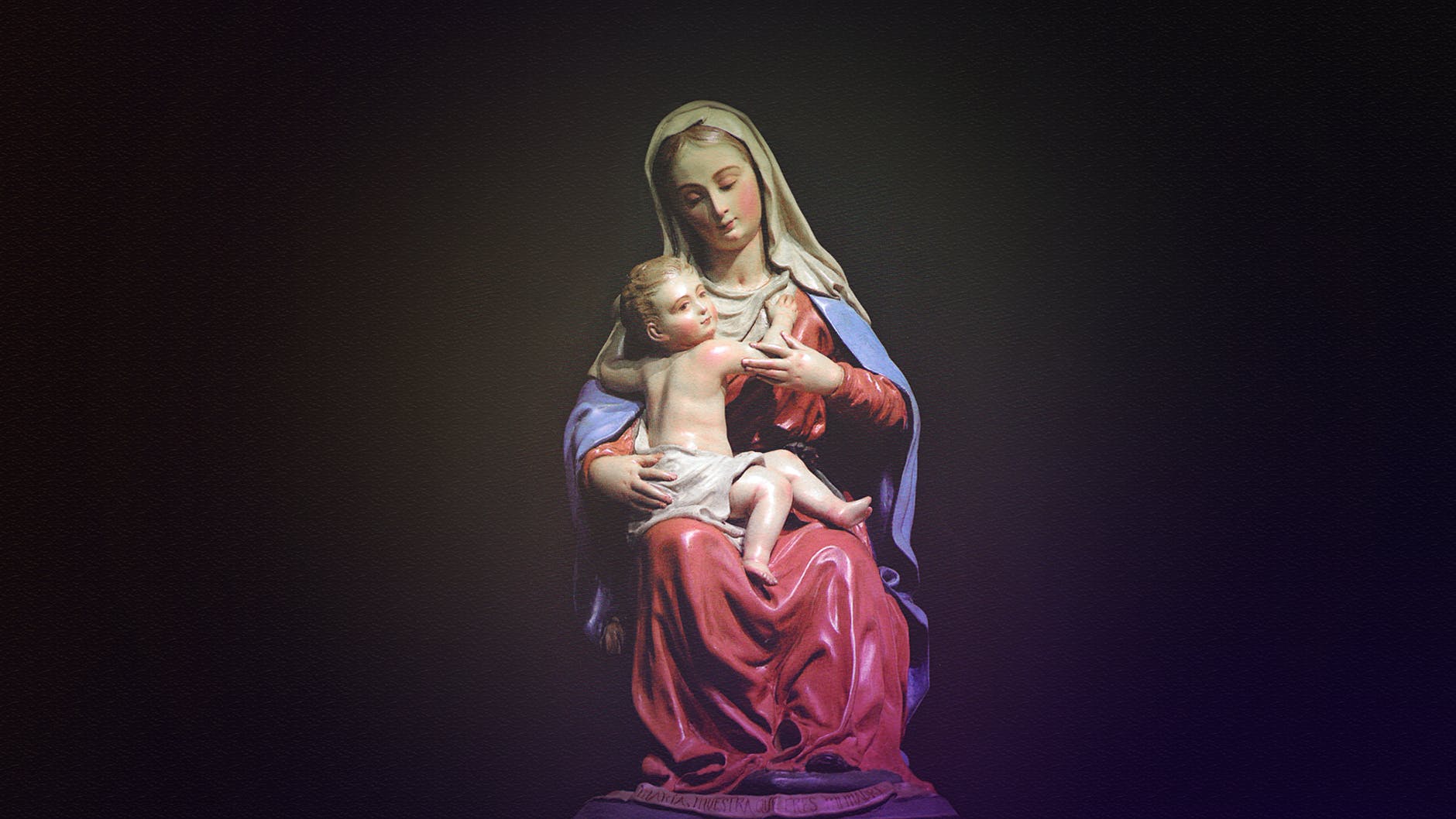Yesterday afternoon, I got a call from Rev. Ellen Peach, a retired United Methodist pastor who worships with us at Keith Church. She told me she and David Siklosi had been working on a visual design for today, which is Trinity Sunday (which is always the Sunday after Pentecost when the church celebrates the gift of the Holy Spirit). She wondered if I could meet them over at the church to let them in so they could hang it in the Gathering.
When I arrived, David’s pickup truck was already parked under the awning. In the back was a ladder and three rings formed from water hoses (they looked like hula hoops) fastened together. I said something you would probably expect me to say: “it looks like a three-ring circus around here.”

We brought it into the Gathering along with the assortment of rope and streamers that Ellen had brought. It was clear we needed a taller ladder, so David and I fetched the big one the church has. Ellen went to get some scissors and tape, and we proceeded to affix three sets of white streamers and some loose rope to each of the three rings. Then we tacked some shiny tinsel to the wooden bar across the back. Then David hoisted the whole contraption into the air with thirty-pound fishing line hanging from the spotlight racks. By then, our worship leader Josh Stephens had shown up and he helped us make sure everything was level and centered.

I love that the church’s teaching of the Trinity is all about teamwork, cooperation, what the ancients called “co-inherence.” It was like we were all participating in that same spirit of teamwork and cooperation, that we were all sharing together in the life and the energy of the Trinity in the teamwork that it took for us to prepare and to place this symbolic representation of it in our worship space.
Once it was in place, we all stepped back and took it all in. When we had arrived, I couldn’t quite picture what they had in mind, but once it was up there above us, in front of us, I could see that it was beautiful in its elegant simplicity in symbolizing the mystery and the majesty of the Trinity. I confessed to Ellen that even though I’m not gifted with such creativity myself, I sure can appreciate it when I see it!
Then, in a flash of inspiration, I said to them, “Hold on a sec, let me flip on the light behind the cross.” Then when we stood together in the back of the Gathering and looked at it again, we could see the light of the cross shining through the shimmering tinsel streaming down through the center of the rings. That was the real “ahh” moment for me.

I took a photo of it with my phone and sent it to our associate pastor Andrew Lay. He was mighty impressed as well and posted it on our church’s social media where several folks near and far have marveled at it.
Over the rest of last evening and throughout this Trinity Sunday, I’ve continued to ponder this serendipitous alignment of symbols in our worship space and to wonder if the symbol of the Trinity might help us reflect on the significance of the cross. If wonder if it might be helpful for us, in other words, to look upon the cross through the lens of the Trinity.
I remember a paper I wrote in seminary in which I explored the possibility of a Trinitarian theory of the atonement. The atonement has to do with how we are reconciled or made “at-one” again with God. Most of the atonement theories advanced throughout Christian history have focused either on the work of Christ on the cross or on some sort of transaction between God and Jesus on our behalf.
In my paper, however, I posed this question: what if the atonement was not just Jesus acting alone or something that took place between God and Jesus, but rather was an event in which the entire Trinity – Father, Son and Holy Spirit – was involved and engaged?
I went on to suggest that perhaps it is by the light of the Holy Spirit that we can see that Jesus gave his life for us on the cross to show us the depth of God’s love and mercy and grace toward us. In other words, when we look at the cross, we can see not just the work of Jesus but the work of the whole of the Holy Trinity to win back our at-one-ment with the one God.
I don’t know. I’m still thinking about all this, pondering it. I suppose the best symbols always have a surplus of meaning and significance. The deepest mysteries, like the doctrine of the Trinity, are always inexhaustible.
But after church today, I called together some of the children who were there and asked them to join me in the back of the Gathering. I pointed out the symbol of the Trinity and we talked a bit about how it represents the one God we encounter and worship in the Spirit of Jesus Christ. And then I asked them if they saw anything back behind it, shining through. One of the girls spoke up immediately and said, “the cross!”
After commenting on how cool that was to see, I then talked about how I have to wear glasses to help me see things more clearly, and maybe this idea of God as a Trinity is like a pair of glasses that can help us to see and understand the cross more clearly.
I’m not sure if they understood a thing that I was talking about. I will admit I was pretty inarticulate. But maybe someday they will remember peering through that suspended symbol of the Trinity and seeing the light of the cross. And maybe then they’ll see it a little more clearly and understand it a little better. At least, as well as any of us can understand something like that. Something so magnificent.



